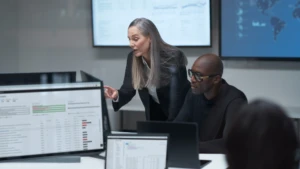
Preparedness means planning, and there are tools to help
Fall is finally here, and as we close out September—National Preparedness Month —it’s the perfect time for governments and citizens to be thinking about how to survive a disaster, give aid to others in need, and stay in touch with family and friends when traditional communications are disrupted.
Being aware of the challenges you might face, planning for how you will meet them, and sharing these plans with family and others are the first steps in preparedness, and there are a number of resources to help you get started. The Federal Emergency Management Agency’s Ready.gov website is a good place to start.
There are also personal digital tools that provide practical help with planning in advance and most of us have the power in our hands, literally, to put this technology to work. Today’s smartphones have the power to support applications and services that can make us better prepared for emergencies as well as to make everyday life more convenient.
HelpBridge is a free mobile app for Windows, Android, and iOS phones to connect people with family and community through a single message sent to a pre-selected contact group. In either a minor event such as a flat tire or in a natural disaster, the app uses email, texting, Twitter and Facebook to let others know whether you need help or are okay, and where you are through GPS coordinates if you choose to use that option.
Staying in touch during a disaster can be a challenge when traditional infrastructure is damaged or overloaded. Digital alternatives such as texting can be more effective than standard voice, but there also are digital voice and video options that you can use. With the Skype mobile app you can use your smartphone to stay in touch when a computer is unavailable or hard to get to.
The cloud can give you and others access to critical information from almost any type of device or location, so that it remains available whatever the conditions around you. A OneDrive account gives you 15 GB of storage for cloud backup of important documents and files; everything from wills to videos to family photos. HealthVault lets you store, access and share personal medical information.
Many of the applications and tools you use every day to make your life more convenient also can be leveraged during an emergency to provide you with the information and services you need to overcome disaster and to help others. The key to taking advantage of them is planning ahead so that you have the tools and information in place when you need them. It is never too later—or too early—to begin planning.
To learn more about Microsoft Disaster Response visit www.microsoft.com/disasterresponse or follow@msftresponse and the hashtag #NatlPrep.
Senior Communications Manager, Microsoft Disaster Response




